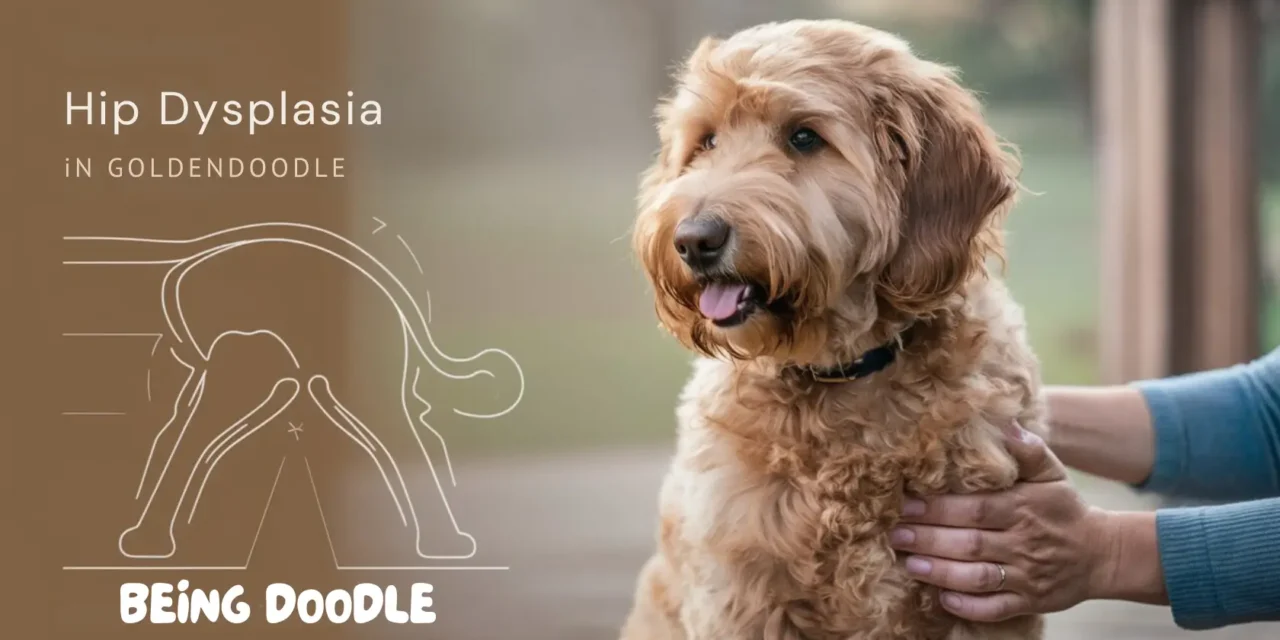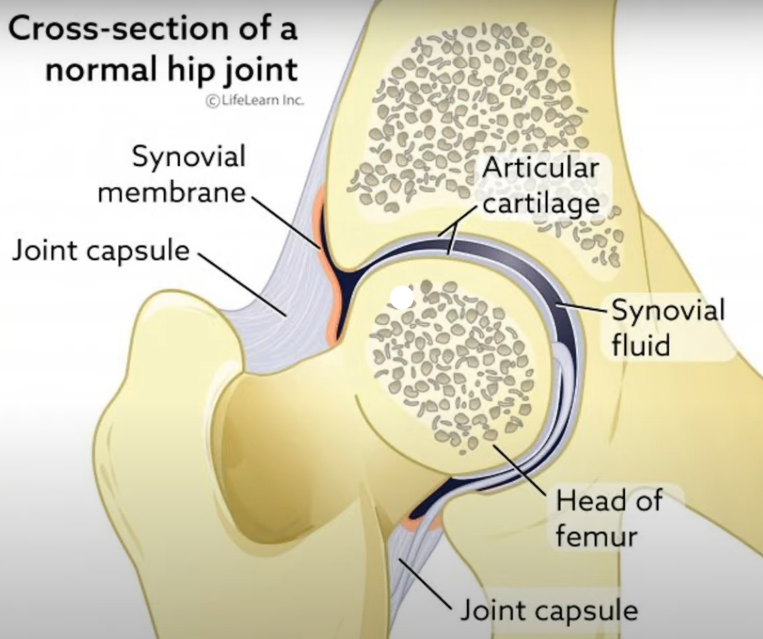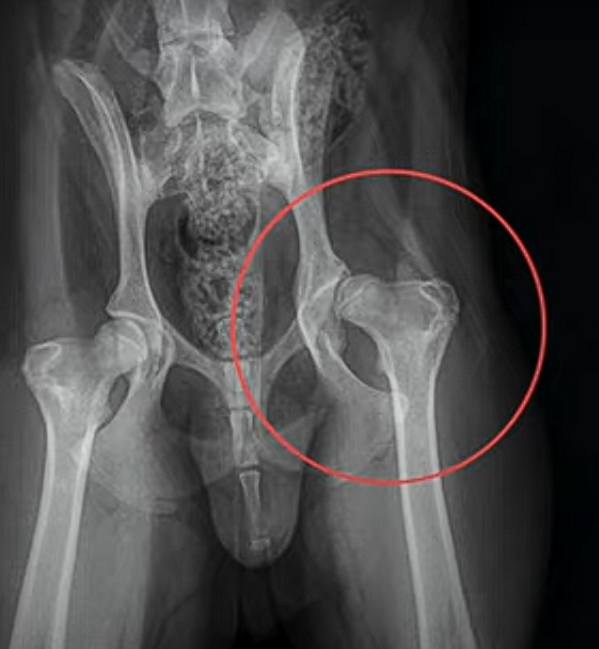
Goldendoodle Hip Dysplasia: 7 Crucial Facts Every Owner Must Know

“Is your Goldendoodle’s swagger more of a struggle? know the hidden threat of hip dysplasia and learn how to keep your buddy friend bouncing with joy! 🐾💪”
As a proud owner of Goldendoodle, you want nothing but the best for your furry friend. But have you ever heard of hip dysplasia? This familiar condition can greatly affect your dog’s life experience; knowing is half the battle. The rest of this post will be an ultimate guide to Goldendoodle hip dysplasia including what it is, symptoms and how they affect your pet life. Whether you are a Doodle veteran or on the hunt for your first dog, this article aims to give you all that it takes to keep your furry friend healthy and satisfied.

1- What is Hip Dysplasia in Goldendoodles?
Hip dysplasia is a genetic trait in which the hip joint has not formed correctly. The hip socket is called the acetabulum which helps keeping ball firm, while allowing smooth movement of bones in a healthy joint. However, in dogs with hip dysplasia this fit is loose instead of snug, and the joint becomes unstable which eventually leads to arthritis present most commonly as pain.
its being a crossbreed between Golden Retrievers and Poodles, can inherit this condition from either parent. Whereas not all Goldendoodles will develop hip dysplasia, however, it is important to remain aware of the prevailing Risks and Signs
2- What Causes Hip Dysplasia in Goldendoodles?

The reality, however, is that hip dysplasia is largely a genetic disease but there are many other factors that affect the development and severity of this trait:
- Genetics: The initial cause is inherited genes from parent dogs.
- Rapid growth: Large breed puppies that grow too quickly are at higher risk.
- Obesity: Excess weight puts additional stress on the hip joints.
- Improper nutrition: Diets too high in calories or certain nutrients can contribute.
- Over-exercise: Excessive activity during growth phases can strain developing joints.
3- What Are the Signs of Hip Dysplasia in Goldendoodles?
Hip dysplasia can develop slowly over time, but the earlier you identify it and take corrective action (if possible) for your Goldendoodle – the better their prognosis. Watch out for these signs:
- Difficulty rising from a lying position
- Reluctance to climb stairs or jump
- Decreased activity or exercise intolerance
- “Bunny hopping” gait when running
- Limping or lameness in the hind legs
- Visible pain or discomfort when touched around the hip area
- Muscle loss in the thigh area
- Narrow stance in the hind legs
4- How is Hip Dysplasia Diagnosed in Goldendoodles?

If you are worried that your Goldendoodle could be suffering from hip dysplasia, it is important to consult with a veterinarian. This diagnosis usually consists of:
- Physical examination: Your vet will assess your dog’s gait and manipulate the hip joints.
- X-rays: Radiographs provide a clear view of the hip joint structure.
- OFA (Orthopedic Foundation for Animals) evaluation: X-rays can be submitted for expert analysis and scoring.
- Penn HIP method: This diagnostic technique measures hip joint laxity.
Its early diagnosis is necessary as it will help in its proper management and would ensure a good quality your pet life.
5- What Treatment Options Are Available for Goldendoodle Hip Dysplasia?
Fortunately, there are a few different treatment methods available in medical history, that can be used if your pet suffers from hip dysplasia:
Conservative Management
- Weight management: Keeping your dog at a healthy weight reduces stress on the joints.
- Exercise modification: Low-impact activities like swimming can help maintain muscle strength without straining the hips.
- Physical therapy: Targeted exercises and therapies can improve mobility and reduce pain.
- Pain management: NSAIDs and other medications can help control discomfort.
- Supplements: Glucosamine and chondroitin may support joint health.
Surgical Options:
- Total Hip Replacement (THR): Replaces the entire hip joint with artificial components.
- Femoral Head Ostectomy (FHO): Removes the femoral head, allowing scar tissue to form a “false joint.”
- Triple Pelvic Osteotomy (TPO): Realigns the hip socket to improve joint stability (typically for younger dogs).
The type of treatment plan that will work best for your Goldendoodle is going to be based on their age, how severe the issue has become and also just what shape they are in overall. Never hesitate to ask your vet for the best protocol.
6- Can Hip Dysplasia in Goldendoodles Be Prevented?
Although you cannot affect the genetics of your Goldendoodle, there are some steps that can be adopted to minimise hip dysplasia and help in its treatment.
- Choose a reputable breeder: Ensure they perform health screenings on parent dogs.
- Maintain a healthy weight: Obesity significantly increases the risk of hip problems.
- Provide proper nutrition: Feed a balanced diet appropriate for your dog’s age and size.
- Control exercise: Avoid excessive high-impact activities during growth phases.
- Regular check-ups: Schedule routine veterinary exams to catch potential issues early.
As always, prevention is better than cure and when it comes to the health of your doodle this really stands true.
7- Living with a Goldendoodle with Hip Dysplasia
Hip Dysplasia is the number one health problem in Goldendoodles today.
Rest assured, your Goldendoodle is not hopeless if it’s been diagnosed with hip dysplasia. With proper management, most dogs with this condition can live happy and active lives. Some Quick Tips for Keeping Your buddy Active and Happy
- Create a comfortable environment: Provide orthopedic bedding and easy access to food and water.
- Use ramps or steps: These can help your dog access furniture or cars without jumping.
- Maintain a consistent exercise routine: Regular, moderate activity helps maintain muscle strength and joint mobility.
- Consider alternative therapies: Acupuncture, massage, and hydrotherapy can complement traditional treatments.
- Stay positive: Your Goldendoodle picks up on your emotions, so maintain an upbeat attitude during treatment and recovery.
Conclusion
Hip dysplasia in Goldendoodles can be difficult to manage, but with some understanding and natural solutions it needn’t define your dog’s life. The more you learn about the causes, are able to identify the signs, and how they can be treated provides a means of helping your Goldendoodle become healthier. As always, early detection and intervention are vital in keeping hip dysplasia under control.
Watchful eyes, constant communication with your vet and all the love you can give are some of the things a Goldendoodle owner should do. Even if your Goldendoodle is HD positive, with properly-considered care and management at a young age (as well as medical help from your vet), this breed can be all of the joyous family-friendly companion you know it to truly be.
You are helping to give your Goldendoodle the best chance at a happy, long life by being informed and proactive. I mean that is what being a pet parent is all about, right?
Frequently Asked Questions
How common is hip dysplasia in goldendoodles
Hip dysplasia is relatively common among goldendoodles due to their ancestry, which includes breeds like the golden retriever and poodle that are prone to this condition. It’s one of the more common goldendoodle health issues
Sources:
American Kennel Club (AKC): https://www.akc.org/expert-advice/health/hip-dysplasia-in-dogs/ The AKC provides comprehensive information on canine health issues, including hip dysplasia. Orthopedic Foundation for Animals (OFA): https://www.ofa.org/diseases/hip-dysplasia OFA is a respected organization that focuses on improving the health and well-being of companion animals through genetic health screening.



















Recent Comments